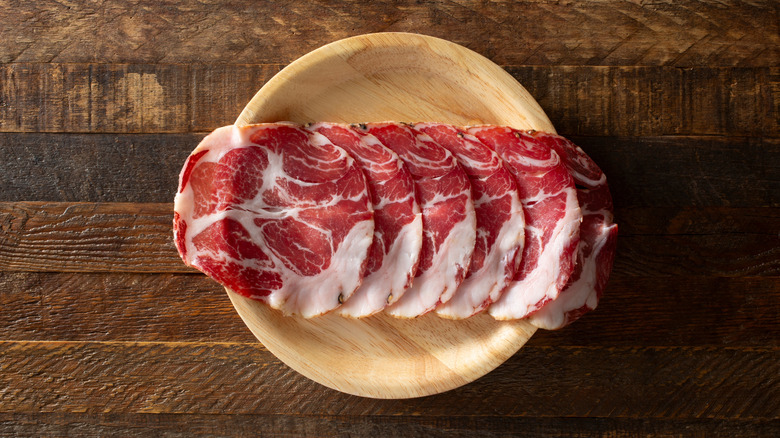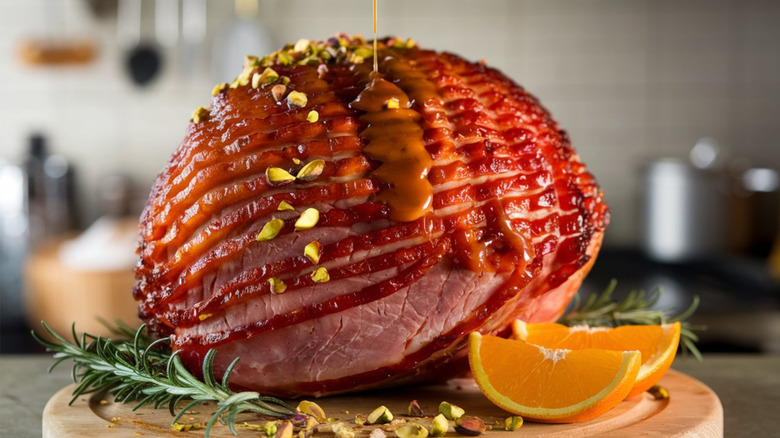Capicola Vs Ham: How These 2 Cured Meats Differ
Capicola and ham are two different types of cured, processed deli meat that differ in their curing process. Technically speaking, capicola is a type of ham, but it's processed in a way that makes it distinct from the standard "ham" that you likely think of when you hear the word.
One of the main differences between ham and capicola are the curing methods employed for each one. Capicola is dry-cured, whereas ham is typically wet-cured (though ham can also be dry-cured). Capicola also stands out because of the seasonings used in its curing process. In addition to salt, pepper and paprika are used at this point to add flavor. The meat also has a much creamier texture and richer flavor than typical ham, with hints of spice. Perhaps the biggest difference between the two is that most hams come from the leg of a pig, whereas capicola is sourced from the animal's neck and shoulder.
Cured meats are everywhere, to the point where much of the meat you find in your grocery store's deli is cured in one way or another. Pork, the most consumed meat in the world, is also the most commonly cured meat, but capicola and ham are just two examples of the many types of cured meat you can find in stores and delis.
How capicola and ham are cured
Wet-curing is the more common method of curing meat, perhaps because it is also the faster and simpler one. This is the process by which most commercially sold hams are made. Also sometimes called brining, it involves either coating or injecting the meat with a salt brine to preserve it by removing bacteria and moisture, which preserves it and makes the meat edible without cooking. It's more commonly used in commercial settings since it's easier and quicker than dry-curing, so it goes into a lot of the meats you find in your grocery store's deli. Some examples of wet-cured meat besides ham are corned beef and pastrami.
Dry-curing is how capicola is made, along with other meats like bresaola and culatello. It's a slower process that uses air drying instead of a salt brine to cure meat. More specifically, the meat is coated with salt and other seasonings and hung up to dry. Similar to wet curing, this salting step combats bacteria and adds flavor to the meat. Some dry cures can take years (thankfully, capicola usually only takes a few weeks), but it's well worth it for the resulting delicious cuts of meat.
Wet-curing typically results in a more even distribution of flavor and a juicier final product, whereas dry-curing gives meat a stronger flavor and helps it last longer without spoiling. While there are many differences in meats like ham and prosciutto or capicola besides their curing methods, dry- versus wet-curing has a big impact on the final product.

